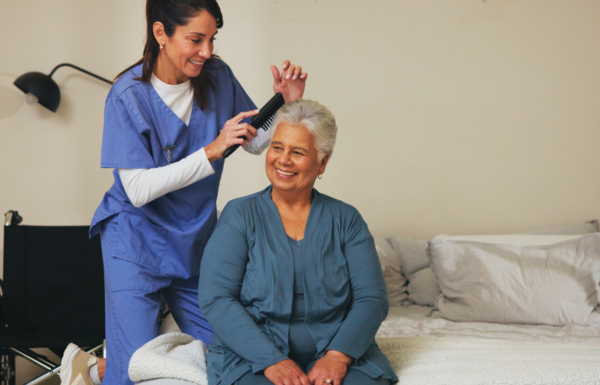Maintaining good hygiene plays an important role in health, comfort, and self-confidence. For older adults or individuals with limited mobility, daily bathing can be challenging without the right support. Caregivers often provide two main options—bed baths and showers—each serving different needs. Choosing between them depends on the person’s health, physical ability, and preferences.
This blog explores both methods in detail, outlining their benefits and considerations, so families can make informed decisions about the most comfortable and safe hygiene routine for their loved ones.
- Understanding a Bed Bath
A bed bath involves cleaning the body while the individual remains in bed. It is often recommended for people who are unable to move safely to a bathroom or who are recovering from surgery, illness, or injury. Caregivers use warm water, mild soap, and washcloths to gently clean the skin.
Bed baths can be partial or complete. A partial bath typically focuses on areas most prone to bacteria, such as the face, hands, underarms, and perineal area. A complete bed bath covers the entire body. Both approaches help keep the skin clean, reduce the risk of infections, and provide comfort when mobility is limited.
- Benefits of a Bed Bath
A bed bath offers several advantages for individuals with restricted movement. The most important thing is safety, since it avoids the risk of falls that may occur when transferring to a shower. Bed baths also allow for personalized care at a pace that matches the individual’s comfort.
Another benefit is skin monitoring. Caregivers can check for changes such as redness, dryness, or sores that may need medical attention. This proactive care helps prevent complications that might otherwise go unnoticed. Bed baths also create an opportunity for gentle touch and conversation, which can bring reassurance and reduce feelings of isolation.
- When a Shower is the Better Option
For those who can safely transfer or stand with assistance, showers often provide a refreshing and more thorough cleansing experience. Warm water can stimulate circulation, relax muscles, and leave the person feeling revitalized. Showers can also help rinse away soap more effectively, reducing the risk of skin irritation.
Many individuals prefer showers because they feel more natural and familiar. Adaptive equipment, such as shower chairs, hand-held shower heads, and non-slip mats, can make the process safer while allowing for greater independence.
- Benefits of a Shower
, which can be especially beneficial for those prone to skin sensitivities. Regular showers also encourage feelings of normalcy, preserving dignity and self-esteem.
For caregivers, showers may be less time-consuming once routines and safety measures are in place. They provide a structured way to maintain hygiene while respecting the individual’s preferences and comfort levels.
- Choosing the Right Approach
The decision between a bed bath and a shower depends on several factors. Health status is the most important consideration. Someone with severe mobility limitations or significant weakness may find a bed bath safer and more comfortable. A person who can move with assistance may benefit more from the freshness of a shower.
Caregivers should also weigh emotional well-being. Some individuals feel more at ease with the routine of a shower, while others may prefer the gentleness of a bed bath. Frequency matters as well. A mix of both methods can work, such as regular showers supported by bed baths on days when energy levels are lower.
Professional caregivers can help families decide which option best fits the individual’s situation. Trained support ensures that hygiene needs are met while maintaining safety, dignity, and comfort.
- The Role of Compassionate Care
Hygiene support is not just about physical cleanliness. It is also about creating a positive, respectful experience. A calm, patient approach helps ease anxiety and preserves trust between the caregiver and the person receiving care. Whether through a bed bath or a shower, consistent hygiene routines improve overall health and contribute to a better quality of life. Provides caregivers who understand the balance between safety, dignity, and comfort. Each plan is guided by the individual’s needs, ensuring the right level of hygiene support is always in place.
- Making the Choice Easier
Families often feel uncertain about what option to choose. Open communication with healthcare providers and caregivers can bring clarity. A supportive plan may include a combination of bed baths and showers, adapting to the individual’s changing health and preferences over time.
At One By One Home Care, the focus is always on providing compassionate, professional support that makes hygiene routines safe and comfortable. Whether your loved one needs assistance with bed baths, showers, or a blend of both, the right caregiver can make each experience reassuring and respectful.
If you’re exploring care options for a loved one and want guidance on hygiene support, contact One By One Home Care today. A friendly team member can help you design a care plan that meets your family’s needs with comfort and dignity in mind.







Leave a Reply